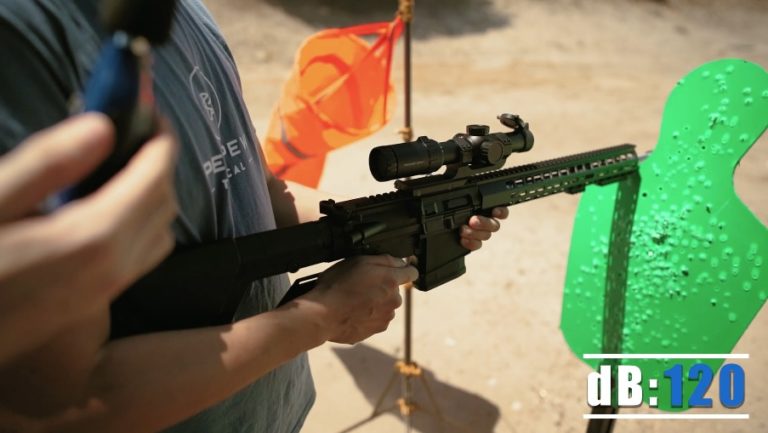

Instead, there is a closed portion on the bottom. Unlike a flash suppressor, though, there aren’t openings evenly placed all the way around the device. One thing you’ll notice on a compensator is the opening on top of the device (pictured above). How do Compensators Work?Īs I addressed above, a compensator works to help mitigate muzzle climb-this happens because gas is directed upward, pushing against the closed portion of the compensator. Again, there are devices helpful for both of these, but that’s a compensator/brake hybrid, not a true compensator. What’s not the same thing is muzzle climb and recoil. Photo Credit: Tire Iron/Compensator Muzzle Device Muzzle climb, muzzle rise, no matter how you call it, is the same thing. Sometimes, you will hear people call it muzzle climb-we have a great way of giving everything a few, if not several different names in the gun community.

So, what is a compensator? A compensator, simply put, is a device that goes on the end of your muzzle to help prevent muzzle rise. Flash suppressors and muzzle brakes are often mislabeled - muzzle brakes do not suppress the flash produced from the gasses exiting your rifle’s muzzle.But, on its own, a compensator isn’t meant to mitigate recoil. Recoil can be decreased using a compensator - this is only true if you have a hybrid.Compensators are often referred to as muzzle brakes-they aren’t the same thing, and they have two different jobs.Here’s where you typically find inaccurate information. Keep an eye out for a future blog post all about flash suppressors! Now throw in the fact that there are hybrid versions of these muzzle devices-you’ll find more inaccurate information, which is why I’ve decided to cove a few of these today. But if you don’t know what you’re looking at, it’s easy to think they’re all the same thing. They also look slightly different from one another. Each of these muzzle devices is responsible for different things. Unfortunately, these devices are often confused, and you’ll find, even those behind the gun counter mess it up. Photo Credit: Tire Iron/Muzzle Devices Muzzle Devicesįirst off, what’s a muzzle device? A muzzle device can be any number of devices that attach to the muzzle of your firearm-surprising, I know. I’ll even touch on the hybrid versions of these muzzle devices. While this blog will be looking at muzzle brakes and compensators, specifically, there are also flash suppressors/flash hiders. There are several devices available, depending on what you want the device to do. Today I will cover two similar-looking but very different parts-often confused-muzzle brakes and compensators. However, this isn’t the only option available. This article did more to confuse me than to educate me.Ĭan you provide more insight into these seeming contradictions? I understand that most of these devices are hybrids in the way they function, but side cuts to reduce recoil and top cuts to compensate and reduce upward muzzle movement makes sense to me, but seem contradictory in the descriptions of each device.In my last article about building a custom AR-15, I mentioned compensators as one of your muzzle devices. I'm doing a lot of research before my first AR build and am trying to learn as much as possible about each component. I'm a gun guy with plenty of experience with various rifles, handguns, and shotguns, but I'm a n00b when it comes to the AR-15 platform. Under number 5, you refer to the previous 2 (M4-72 and Miculek) as pure compensators. Likewise, the next device is under the heading "DPMS Miculek Compensator", yet the caption under the picture says "DPMS Miculek Brake" and you describe it as a, "relatively simple pure compensator", but the side cuts make it appear to be more of a brake. For example, the Precision Armament M4-72 Severe Duty is described as, "has some pretty aggressive side cuts which make it a pure compensator." I thought side cuts would make it more of a pure brake. However, the descriptions of other several devices seem to contradict the definitions. Compensator: reduces the vertical movement, mostly with holes on the top Muzzle Brake: reduces felt recoil, mostly with side ventsĢ. At the beginning, the various devices are defined:ġ.


 0 kommentar(er)
0 kommentar(er)
